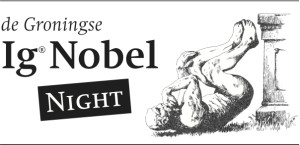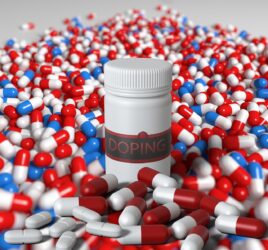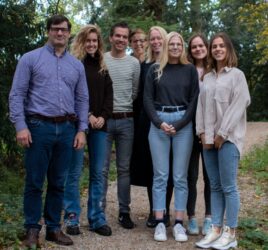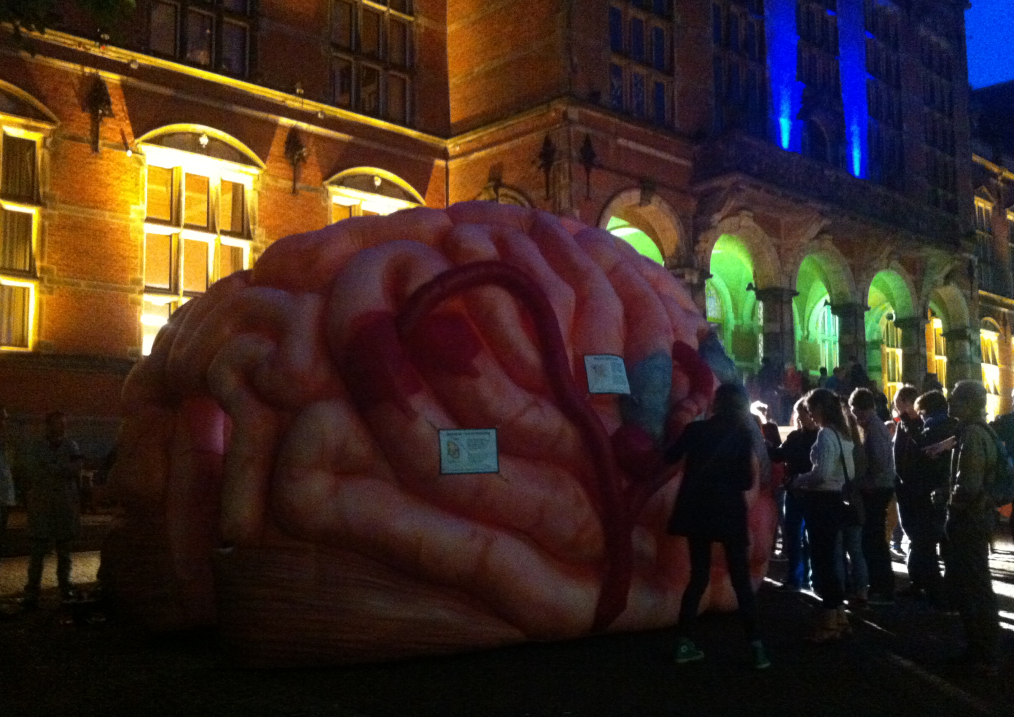
Alice in the night of Arts and Sciences
The town is brimming with lights, music, and laughter, especially near orange-lit crescents or white lanterns. It is not too warm, not too cold, and slowly getting darker. I prepare myself for an evening running around town, capturing the pearls of the night of Arts and Sciences with my camera (well, my phone…), and scribbling down my experiences with a fountain pen (ok, it is just a ballpoint).
Just out of the door, I stumble across two guys in matching shirts, with press passes around their necks. One of them holds a fancy camera. They have been hired by the university to make a video report of the night. “Speaking of filming”, one says, “We should get that on camera!” I divert from their camera to see what they’re looking at. Three giant mannequins are leaning toward an elderly lady. They are part of a continuous art performance, the so-called I-puppets. Extraterrestrial creatures exploring earth, with just one big eye to take it all in. Funny and terrifying at the same time.
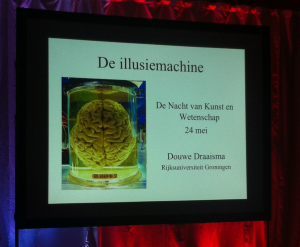
About time
“a watched kettle never boils”
I walk further, toward the Groningen museum, while reminding myself that whatever I do next time, I need to get a press pass…. and a fancy camera. I take the stairs to the room with a poetic and unpronounceable name: Coop Himmelb(l)au—named after an architectural design firm—and wait for the first lecture of tonight. The room quickly fills up with people, waiting for Prof. Douwe Draaisma, Heymans Professor in History of Psychology. The lecture focuses on time illusions: Why years seem to pass quicker when we grow older, and why “a watched kettle never boils”. When there is either a low or a high level of activity, the perceived duration of time seems to stretch. This is why police officers perceive the period they were hunting down a suspect in a car chase longer than it actually was. In contrast, time seems to fly when we grow older. In our twenties we can very well estimate the duration of 3 minutes. When people older than 60 estimate the duration of 3 minutes, they are on average 40 seconds off. Their internal (cell division) clock slows down, while all other clocks seem to be speeding up.
Midnight Mass
Anco (10 years old): “Can scientists explore whether or not God exists?”
I have to rush to the Academy building. Here I join the “midnight mass” about religion. Anco (10 years old), just sent to bed by his parents, has asked if scientists can explore whether or not God exists. André Aleman, professor in Cognitive Neuropsychiatry talks about if religion is the product of our minds, and whether there exists a tension between religion and science. I learn that many brain areas are associated with religious experiences, which was discovered by (e.g.,) putting nuns in the MRI machine. Prof. Aleman states that we cannot prove whether our brains produce or perceive God. Science is concerned with systematic observations and facts. Apart from the observable world, there might be more than we can explore in a scientific manner… Who knows?
After an interesting discussion, I have some time to look at the exhibits at the Academy building and talk to two researchers who demonstrate their research, in which they compare groups of children that are “at risk” of having dyslexia, because their parents also have this condition. In this study (in progress) they explore the difference between children that actually develop dyslexia, and those that do not. I briefly watch a student performing a rhyming task that is used in their study, and then I’m off.
Makes you laugh, then think
“Good for the environment and yourself”
My last stop is the Ig Nobel night at the church. The Ig Nobel Prizes honor achievements that first make people laugh, and then makes them think. Every September this is celebrated with a gala at Harvard’s Sanders Theatre. Tonight, we have our own mini Ig Nobel-night. Former prize winner Kees Moeliker is hosting the event, with help of referee Michael, who indicates when the time is up. I hear that a woman’s bra can be converted into a face mask (which could save lives in case of a disaster), and that mosquitoes are attracted to the smell of limburger cheese (which can help us combat malaria). Then it is time for the 24/7 lectures: a technical description in 24 seconds, then a simple description in 7 words. Dr. Ellen van der Werff and Prof. Linda Steg of our department compete against Dr. Christian Zuidema (spatial sciences) and Prof. Marcel Broersma (journalism). The advantage of the 7-word summary is that it is understandable for a broad audience, such as “Environmental-identity: good for the environment and yourself” (Dr. van der Werff) and “Environmental factors determine if environmental-values influence behavior” (Prof. Steg). Good 7-word summaries indeed, because the applause meter shows an advantage for both psychologists!
My evening ends here and I go home. I dream about time and mind, brain and behavior….and….a press pass! Oh, next year….
Relevant Links
http://www.denachtvankunstenwetenschap.nl/en/
http://www.douwedraaisma.nl/english/index_en.html

